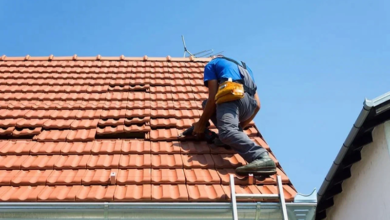How Lawn Pest Spraying Protects Your Yard from Damage

Pests like grubs, chinchbugs, and ants can wreak havoc on your yard, turning lush grass into brown patches and creating pathways for pests to invade your home. Lawn pest spraying is a proactive solution that not only keeps your lawn in peak condition but also safeguards your home’s interior from unwelcome critters.
1. Prevents Lawn Damage Caused by Pests
Many pests thrive in your lawn, feeding on roots, grass blades, or soil nutrients, which can lead to extensive damage.
Common Lawn Pests
- Grubs: These beetle larvae chew on grass roots, causing unsightly dead patches.
- Chinch Bugs: They suck the sap from grass blades, leaving yellowing and dying spots.
- Armyworms: These caterpillars devour grass, leaving behind bare patches.
How Spraying Helps
Lawn pest spraying in Nova targets these pests before they can establish themselves, preventing damage and allowing your grass to grow healthy and green. Regular treatments also disrupt pest life cycles, ensuring long-term protection.
2. Enhances Lawn Health and Appearance
A pest-free lawn is a thriving lawn. Without pests consuming roots and nutrients, your grass has a better chance of flourishing.
Benefits for Your Yard
- Uniform Growth: Prevents patchy areas caused by pests.
- Disease Prevention: Reduces the risk of fungal infections often associated with pest damage.
Spraying ensures your lawn stays lush, green, and inviting all season long.
3. Prevents Pests from Spreading Indoors
Your lawn is often the first line of defense against pests entering your home. Without regular pest control, pests like ants, fleas, and ticks can migrate indoors.
How Lawn Pest Spraying Helps
- Creates a Barrier: Spraying establishes a protective boundary around your home, keeping pests from reaching your foundation or entry points.
- Reduces Flea and Tick Risks: These pests not only harm your lawn but also pose health risks to pets and humans if they make their way indoors.
- Prevents Infestations: By controlling lawn pests, you minimize the chances of indoor infestations that require costly treatments.
4. Protects Your Landscaping Investments
Maintaining a well-manicured lawn and garden requires time, effort, and financial investment. Pests can undo all that hard work in a matter of weeks.
Why Spraying Is Essential
- Protects Trees and Shrubs: Lawn pest spraying often includes treatments for ornamental plants, preventing pests like aphids and spider mites from damaging landscaping.
- Prevents Soil Degradation: Pests that burrow or feed in the soil can disrupt its composition, affecting the growth of grass and plants.
Regular spraying ensures your landscaping remains intact, preserving its value and beauty.
5. Reduces the Need for Reactive Treatments
Addressing a full-blown infestation is much more difficult and expensive than preventing one. Lawn pest spraying provides proactive protection, keeping your yard pest-free before damage occurs.
Key Benefits
- Cost Savings: Preventative spraying is more affordable than repairing damaged lawns or addressing indoor infestations.
- Less Stress: Enjoy peace of mind knowing your yard is consistently protected.
How to Get Started with Lawn Pest Spraying
- Schedule an Inspection: A professional lawn care provider can assess your yard for signs of pests and recommend a treatment plan.
- Choose the Right Spraying Schedule: Treatments should be timed to target pests during their most vulnerable stages, usually in spring and summer.
- Use Eco-Friendly Solutions: Many providers offer safe, environmentally friendly sprays that protect your yard without harming pets, children, or beneficial insects like bees.
- Maintain Your Lawn: Pair spraying with proper lawn care practices, such as mowing, watering, and aeration, to strengthen your lawn’s defenses.
Conclusion
Lawn pest spraying is an essential tool for maintaining a lush, healthy yard while protecting your home from invasive pests. By addressing pest problems proactively, you can prevent costly damage, enjoy a more vibrant outdoor space, and keep your family and pets safe from harmful intruders.
Whether you’re dealing with grubs, ants, or ticks, partnering with a professional lawn care service ensures effective, long-lasting results. Take the first step toward a pest-free lawn today and enjoy the benefits of a beautiful, thriving yard.
See Also: Choosing the Right Emergency Electrician: Qualities to Look For.
FAQs
1. How often should I spray my lawn for pests?
It’s recommended to spray your lawn every 4–6 weeks during peak pest seasons, typically spring through early fall, depending on your region and pest activity.
2. Are lawn pest sprays safe for pets and children?
Always check with your provider to ensure the safety for your family.
3. Can I spray my lawn for pests myself?
DIY spraying is possible but often less effective than professional treatments, which use specialized equipment and formulations tailored to specific pests.
4. What are the signs of a pest problem in my lawn?
Signs include brown patches, thinning grass, visible pests like grubs or ants, and increased bird activity feeding on lawn pests.
5. Does lawn pest spraying also protect my garden plants?
Many pest control providers offer combined services that include treatments for garden plants, trees, and shrubs to protect your entire landscaping.




